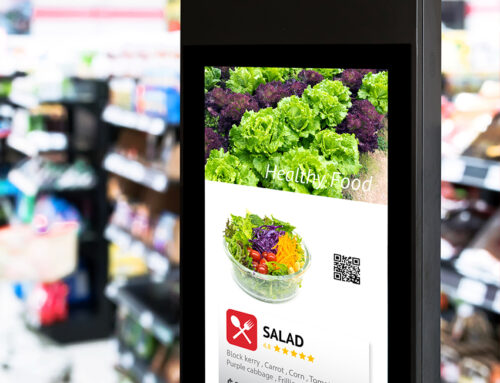Co-Branded Advertising
Marketing pros are always looking for new ways to get a better return on investment from their marketing practices. One excellent way to reap the benefits of advertising for less money is through co-branded advertising. In particular, food and supermarket brands can massively benefit from co-branded advertising.
But what is co-branded advertising, and what makes it so effective? Let’s take a look.
What is Co-Branded Advertising?
Co-branded advertising is a marketing strategy in which two brands (or, in some cases, more than two) will work together. Specifically, co-branding involves attaching both brand names to one product or service. This arrangement can be beneficial because it can increase the overall volume of premium consumers that are will to pay for the product and combine different properties associated with each brand under a single product.
Is Co-Branded Advertising Effective?
Co-branded advertising can be extremely effective at building up small businesses, boosting brand awareness, and breaking into new markets. This is especially true for businesses that are involved with the food and grocery industries. Generally, businesses can expect more sales, improved customer trust for the product or service specifically, technological benefits, and improved product image. To put it simply, co-brand advertising is very effective.
However, it’s important to understand that co-branded advertising is only as good as the partners involved. This can be a tricky process, especially if the two brands aren’t that great of a fit together. Many brands make the mistake of collaborating with competitors. For the food and supermarket industry, it’s important to seek out partnerships with brands that complement one another. For example: Cake mix brands would work well with chocolate brands, grocery stores would pair well with individual product brands, a trendy coffee shop would work well with a music platform, etc.
What is CPG?
Physical goods that people regularly purchase are known as CPG. This strategy has grown in popularity in the consumer packaged goods (CPG) industry, where companies are constantly looking for new ways to reach their target audience and stand out in a crowded market.
What are the Advantages of Co-Branded Advertising?
There are many benefits to using co-branded advertising. For small to medium-sized businesses, advertising a product together simply saves money, as both brands are putting in only half of what they would normally spend on advertising.
Co-Branded Advertising Ideas and Tips
There are many different co-branded advertising ideas and best practices out there:
Make sure you’re partnering with a brand that compliments yours, rather than a competitor. Always take advantage of targeting and retargeting processes so that your product or service reaches the right audience at the right time.
Understand your brand identity, as well as the brand identity of the brand you are collaborating with. This will make the process of creative ad campaigns more cohesive and effective.
Set goals that are mutual. A co-branded marketing partnership should be based on being honest about each company’s goals so that your advertising strategy will be more effective. Advertising techniques are highly creative for reaching one’s target audience. With those goals in mind, you’ll be able to create key metrics that will help both brands track their progress.
Always sign a co-branded marketing agreement. Conduct thorough research into your mutual markets and analyze the results before jumping into an ad campaign. Take a diverse approach to create your ad campaign. Use a mix of different advertising types, such as banner ads, video ads, sponsorships, etc.











